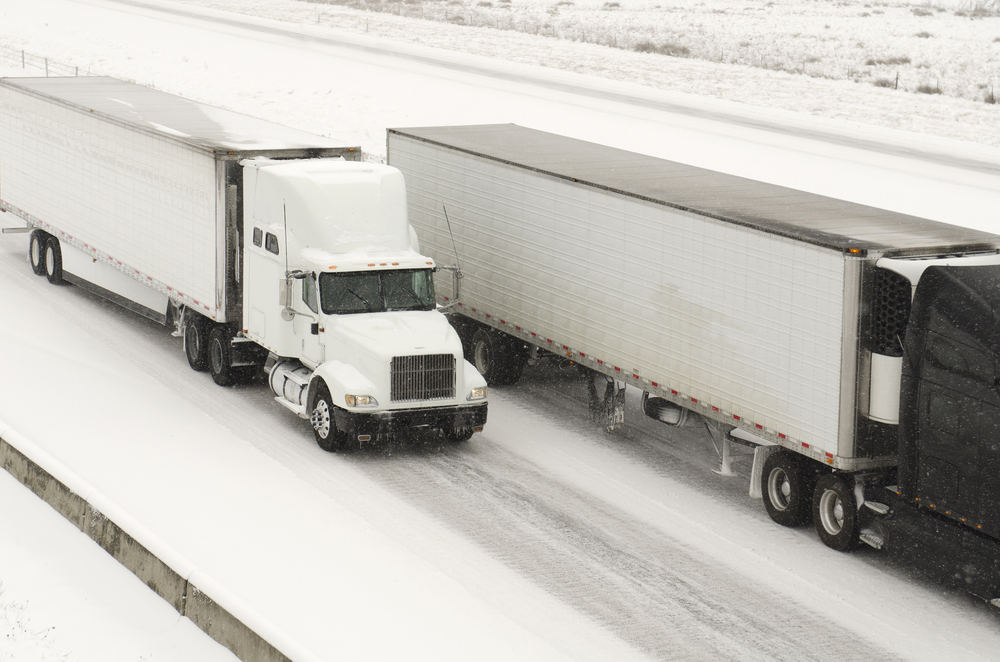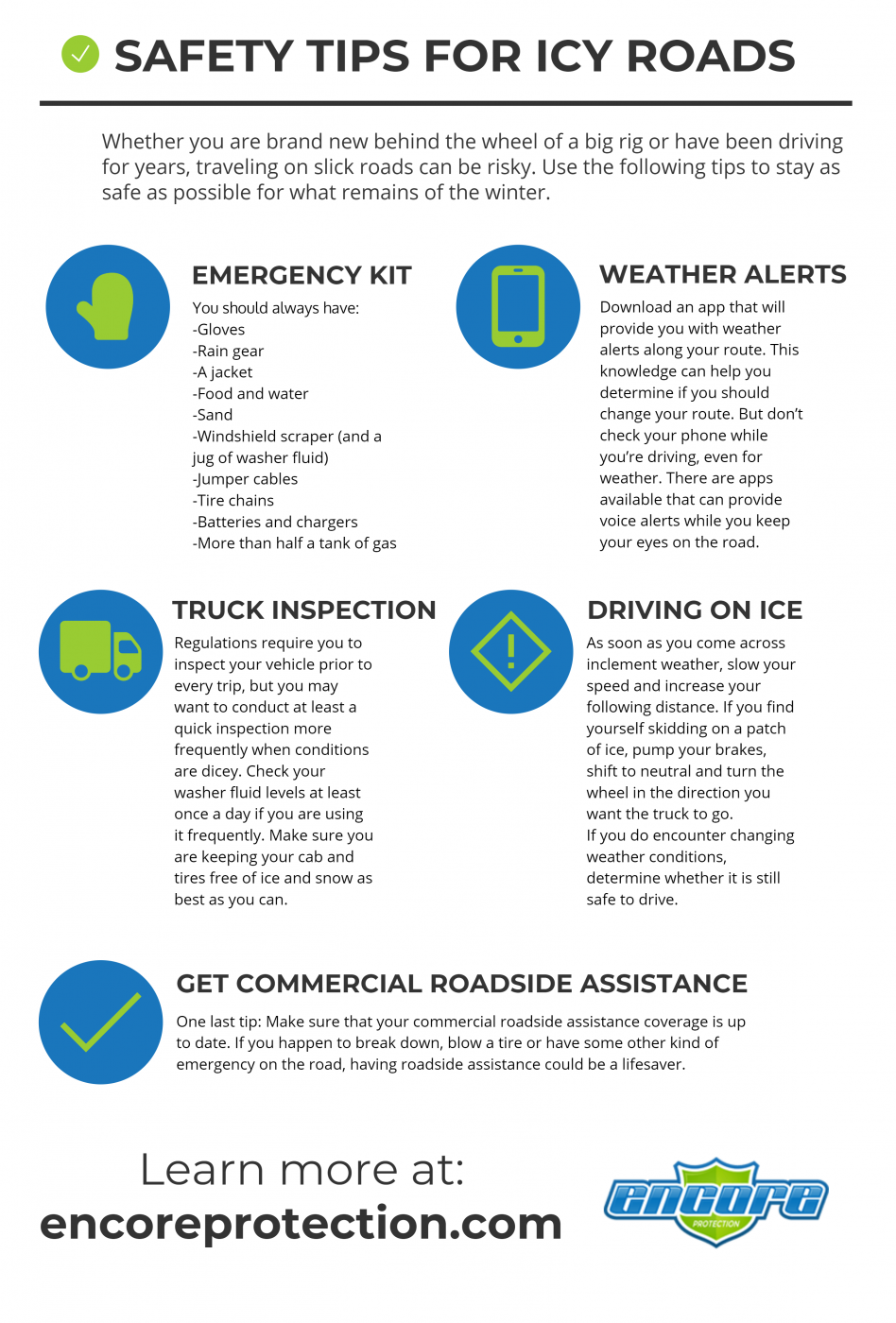Driving on ice-covered roads can be a harrowing experience for anyone. Whether you are brand new behind the wheel of a big rig or have been driving for years, traveling on slick roads can be risky. Use the following tips to stay as safe as possible for what remains of the winter.
Preparation Is Key
You look out the window just before you take off. The skies look clear and you think you’re good to go. Don’t be that person. You know the one… that person who doesn’t believe that weather can change on a dime. Prepare yourself.
You never know when road conditions are going to tank. You should have the following items on hand just in case you need them.
- Gloves
- Rain gear
- A jacket
- Food and water
- Sand
- Windshield scraper (and a jug of washer fluid)
- Jumper cables
- Tire chains
- Batteries and chargers
- More than half a tank of gas
Weather Alerts
Our phones are our greatest tools and you should be using yours to your advantage. Download an app that will provide you with weather alerts along your route. Being made aware of changing conditions can allow you to change your route if necessary before it’s too late. However, don’t check your phone while you’re driving, even for weather. There are apps available that can provide voice alerts, so you never have to take your eyes off the road.
Inspect Your Vehicle
Regulations require you to inspect your vehicle prior to every trip, but you may want to conduct at least a quick inspection more frequently when conditions are dicey. Take a walk around your rig every time you stop. Check your washer fluid levels at least once a day if you are using it frequently and make sure you are keeping your cab and tires free of ice and snow as best as you can.
Driving on Ice and Snow
As soon as you come across inclement weather, slow your speed and increase your following distance. If you find yourself skidding on a patch of ice, pump your brakes, shift to neutral and turn the wheel in the direction you want the truck to go. When you get out of the skid, don’t hit the brakes. Instead, put the truck into gear and accelerate slowly.
Be aware of spots that may be worse than others. If you take an exit ramp or cross a bridge, use an extra bit of caution. Keep an eye out for black ice. It will look like a wet spot on the road. Brake early at intersections and slow your speeds if the wind picks up.
If you do encounter changing weather conditions, determine whether it is still safe to drive. Never be afraid to stop if you need to. It’s far better to stop than to push on and be involved in an accident.
Don’t Neglect Your Commercial Roadside Assistance Coverage
One last tip: Make sure that your commercial roadside assistance plan is up to date. If you don’t already have a policy or are interested in discovering if what we have to offer may be better than your current coverage, reach out to our team. We will be happy to talk with you and help you purchase the coverage you need.



Comments are closed